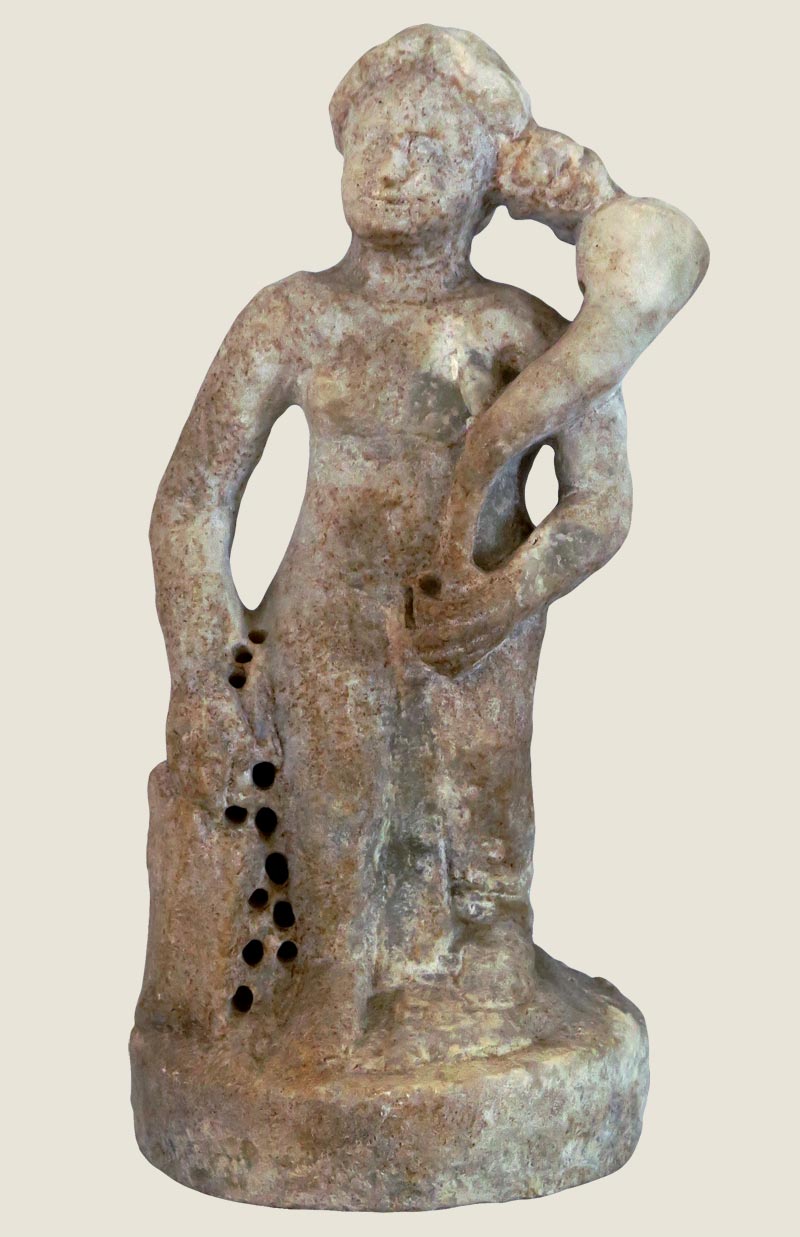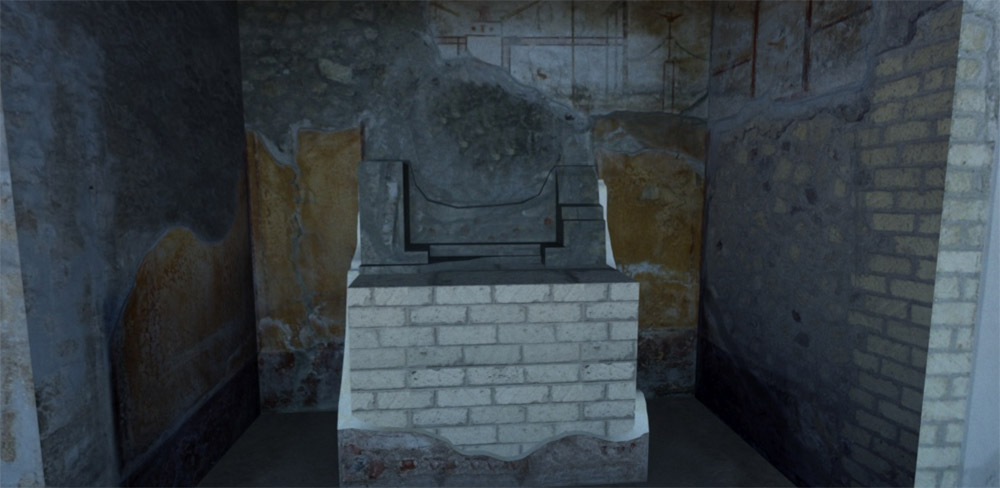
Fortuna, the goddess of fortune, became an important deity in the tumultuous final centuries BC, when people looked to her for good luck—and protection from bad luck. The goddess holds a horn of plenty in her left arm and rests her right hand on a rudder, because she directs the course of events as if she is steering a ship. The statuette is unfinished—the area with drill holes was meant to be removed.




